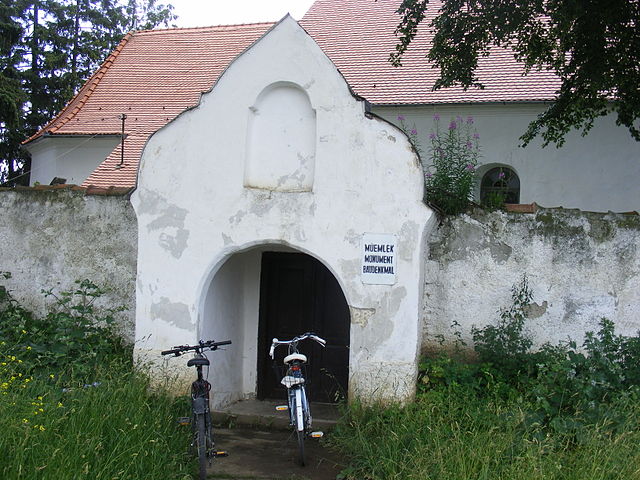Loading AI tools
Leliceni
Commune in Harghita, Romania From Wikipedia, the free encyclopedia
Leliceni (Hungarian: Csíkszentlélek or colloquially Szentlélek, meaning "Holy Spirit", Hungarian pronunciation:[ˈtʃiːksɛntleːlɛk]) is a commune in Harghita County, Romania. It lies in the Székely Land, an ethno-cultural region in eastern Transylvania.
Leliceni
Csíkszentlélek | |
|---|---|
 The "bloody face" | |
 Location in Harghita County | |
| Coordinates: 46°21′N 25°51′E | |
| Country | Romania |
| County | Harghita |
| Government | |
| • Mayor (2020–2024) | István-Alfréd Nagy[1] (UDMR) |
| Area | 36.91 km2 (14.25 sq mi) |
| Population (2021-12-01)[2] | 2,471 |
| • Density | 67/km2 (170/sq mi) |
| Time zone | EET/EEST (UTC+2/+3) |
| Postal code | 537268 |
| Area code | +40 266 |
| Vehicle reg. | HR |
The commune is composed of four villages:
The main village was first mentioned in 1251 by its Hungarian name as castrum Zenth Lelewk. In 1602, it was recorded as Szentlélek and in 1913 as Csikszentlélek. Its original Romanian names was Cic-Sânlelec which was later Romanianized to the current official name. [3] The villages forming the commune belonged to Csíkszék district until the administrative reform of Transylvania in 1876, when they fell within the Csík County in the Kingdom of Hungary. After the Treaty of Trianon of 1920, they became part of Romania and fell within Ciuc County during the interwar period. In 1940, the second Vienna Award granted the Northern Transylvania to Hungary and the villages were held by Hungary until 1944. After Soviet occupation, the Romanian administration returned and the commune became officially part of Romania in 1947. Between 1952 and 1960, the commune fell within the Hungarian Autonomous Province, between 1960 and 1968 the Mureș-Hungarian Autonomous Province. In 1968, the province was abolished, and since then, the commune has been part of Harghita County.
The most important component village of the commune is Misentea (Hungarian: Csíkmindszent, or colloquially Mindszent, Hungarian pronunciation:[ˈtʃiːkmindsɛnt], meaning "All Saints"). It was first recorded as Omnes Sancti in 1332. The village, composed of scattered houses at that time, had already existed in the era of the Árpád dynasty. It was burned down by Ottoman troops in 1661 when half of the village people perished. In 1719, it was hit by a plague. Biblical names are given for the parts of the village, which is explained by the fact that a 19th-century local priest is said to have replaced the Szekely placenames given under the ancient decimal tribal system by biblical names. Its school was already in operation as early as in 1590. In 1910, it had 1190 Hungarian inhabitants. Today, the wood industry provides the main economic activity.




Péter Pál Domokos discovered here the local songbook compiled by János Bochkor between 1716 and 1739.
The commune has an absolute Székely (Hungarian) majority. According to the 2011 census it has a population of 2,002; of which 96.75% or 1,937 are Hungarian.
Formerly part of Sâncrăieni commune, the 4 villages broke off in 2004 with a population of 1,721.

Seamless Wikipedia browsing. On steroids.
Every time you click a link to Wikipedia, Wiktionary or Wikiquote in your browser's search results, it will show the modern Wikiwand interface.
Wikiwand extension is a five stars, simple, with minimum permission required to keep your browsing private, safe and transparent.